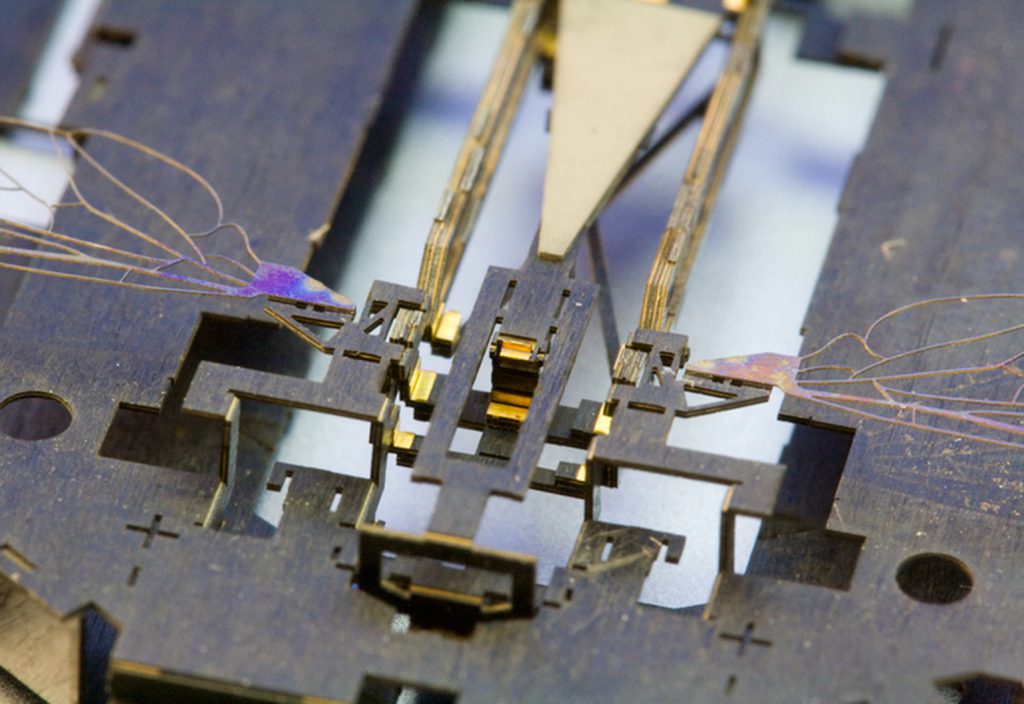As bee numbers decline, technological developments are stepping up to help – including RoboBees that move and act like the real thing to track bee movements and enhance pollination.
While the thought of bees might bring to mind bucolic garden scenes rather than high-tech innovation (killer robot bees a la Black Mirror aside), recent developments are bringing the two closer together.
Flower power
In Brisbane, Australian Michael Candy has designed a working prototype of camera-equipped synthetic flowers that attract bees with pollen pumped through a synthetic stamen.
According to Candy, the artificial flowers resemble the real thing, fooling bees into gathering pollen from the impostors to pollinate real flowers nearby. This could help to increase the chances of pollination for rare or endangered species of orchids.
This prototype is a scaled down version of Candy’s vision to create a vast network of robotic flowers to track and study bee behaviour using cameras and dyes.
Swarming robots
Another technology that could assist bees with pollination is the “RoboBee” – an autonomous robot the size of a paperclip developed by researchers at Harvard University.
The developers say RoboBees could be used not only in crop pollination, but in other applications such as search and rescue missions, surveillance and high-resolution monitoring.
The team’s vision is to create flying micro-vehicles that navigate independently and swarm in a coordinated group like bees do in nature.
But what comes naturally to bees is harder to replicate artificially. To mimic the swarming behaviour, researchers used smart sensors and electronic controls to sense and respond to surroundings, similarly to the eyes and antenna of a bee.
The RoboBees are also able to flap their wings thanks to tiny piezoelectric actuators. The actuators work by causing ceramic strips to expand and contract with electrical signals, moving the wings up and down on miniature plastic hinges in the robots’ carbon fibre bodies.
Pop-up bees
The researchers at Harvard were able to create several Robobees at once by pioneering a pop-up microelectromechanical systems (MEMS) manufacturing technology, which drew inspiration from pop-up books and paper folding techniques such as origami.
Layers of laser-cut materials – including carbon fibre, ceramics, brass and plastic – were sandwiched into a thin flat plate. The plate then popped up to completed 3D-structures.
“It’s really only because of this lab’s recent breakthroughs in manufacturing, materials and design that we have even been able to try this. And it just worked, spectacularly well,” said Robert Wood, faculty lead for the study.
There are other examples of emerging pollination technology around the world.
Last year, a team of researchers in Japan successfully trialled a remote controlled drone to pollinate crops. They are working on an autonomous model that could help farmers pollinate crops as bee populations decline without replacing the role of the insects.
Sign of the times
According to Candy, solutions such as RoboBees and pollinating drones might unfortunately be needed sooner rather than later.
“It’s depressing to think we even need to spend time researching these [pollinating drones], but in places like China some crops are pollinated by hand; and with the decline of bee populations we might need to look to alternatives sooner than we think,” he said.
